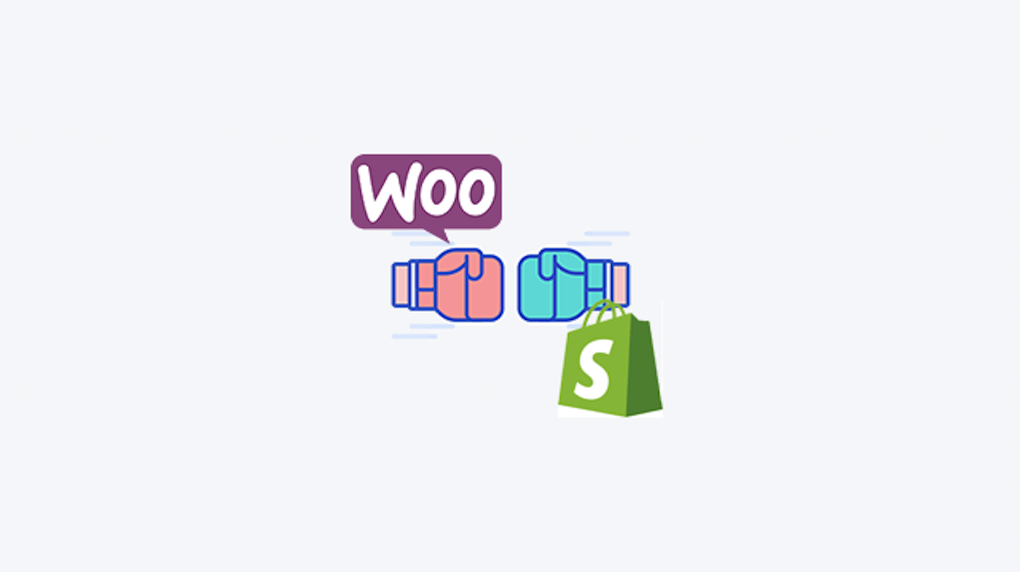
Are you comparing WooCommerce and Shopify Plus?
This blog post will help you understand the pros and cons of two leading eCommerce platforms: WooCommerce, the WordPress plugin that has been around for over 10 years, and Shopify Plus, the advanced version of Shopify with a growing marketing share.
Our goal is to help you make the best decision possible when choosing your platform.
You should use WooCommerce if you are or have a developer, need customization for your shop, and want to scale and add functionality as your store grows.
You should use Shopify Plus if you want to sell on multiple channels like Amazon and Facebook, you would like an easy-to-build store, and you need to sell a high volume of products.
Put simply, with WooCommerce you have to do the work yourself — but have more control.
With Shopify Plus, the technical side of operating your store is taken care of so you have to do less legwork. It also offers strong support for larger businesses. But keep in mind that to customize your site, you’ll still need to have a basic understanding of HTML and CSS.
|
WooCommerce Pros |
Shopify Plus Pros |
|
|
|
WooCommerce Cons |
Shopify Plus Cons |
|
|
Whichever platform you choose, you can still reliably expect certain basic features. For both WooCommerce and Shopify Plus, you should see:
These features give you a functional baseline to plan around on either platform.
When you need the ability and freedom to scale with customized, unique features, WooCommerce is for you. This eCommerce platform provides ultimate flexibility, and is built for longevity.
That’s due to a few things, notably these two inherently related attributes of the platform:
The open-source framework means you have the ability to control all elements of your eCommerce store, including its design, security, and functionality. WooCommerce has eCommerce growth at the core of its model, meaning that you will likely never outgrow the platform.
An abundance of choice is built into the DNA of their offerings — the open-source framework means you can use and adapt the platform as you see fit. So, if you need something, you’re free to build it.
But you likely won’t have to. In fact, someone else has probably already built the functionality you’re looking for and will sell it to you. Or, in lucky cases, give it to you for free. It’s important to note that Shopify Plus apps are much fewer in number than WooCommerce Plugins.
WooCommerce also has excellent SEO plugins like Yoast SEO (roughly 8 million sites use it — so you know it’s good). In contrast, a downside to Shopify Plus’ SEO is that some URLs have extra terms added (e.g. /products/ or /collections/).
Shopify Plus is easy to use, and if you do get stuck, the support offered is timely and easy to access. As an enterprise-level eCommerce brand, this can save you time — and, as you know, time is money for any corporation.
Shopify Plus offers chat, email, help articles, a callback service, and their community as support, 24/7. They have webinars and forums littered throughout their network so you can teach yourself, too. It’s a great combination of pro and self-serve resources that ensure you’re never solving an issue alone.
While WooCommerce doesn’t share the same level of customer support services, Bluehost does. If you use Bluehost for your WooCommerce store, you will have access to their 24/7 phone line and online chat support, along with a host of other resources.

When you start getting into the cost of each eCommerce platform, things get a little sticky.
Now, WooCommerce is free to use — it’s an open source platform, as we’ve mentioned before — but you will end up paying for hosting, a domain name, security, and plugins. These costs can vary significantly, but you may be able to secure an introductory reduced-price period or discounts for signing up for hosting long-term.
WooCommerce also offers some options for essential features that your store can’t do without — like shipping and a payment portal. For example, WooCommerce Payments is an easy option to implement, with no setup or monthly fees. However, they will charge 2.9% plus $0.30 for each transaction you process, along with an additional 1% fee for non-US cards. While you can shop around for other plugins to handle these functions, you’ll need to plan for their effect on your budget.
Since the plugins available from your store cover a huge range of features and are built by different developers, you can expect costs to vary widely. Some plugins (like those included in the “WooCommerce Essentials” selection that WooCommerce recommends) will be billed annually — like their in-house product bundling plugin for $49 USD per year. Third-party plugins can offer more features for a higher cost, like MonsterInsights’ well-regarded analytics support that starts at $199 USD per year.
However, if you’re willing to do a little research — and are confident about your ability to identify safe, reliable additions — you may be able to find cheaper (or even free) plugins that fit your store.
By contrast, Shopify Plus is $2,000 USD per month — or “a variable fee for higher volume businesses.” You should expect some negotiating on price and a guaranteed cost upfront. But, then you could factor in the amount you save with their custom support, and the ease with which you get your store up and running. That fee will also encompass some of the separate costs you’d have through WooCommerce, like securing hosting and security.
That also applies to transaction fees. If you use a third-party payment portal for your Shopify Plus store, you’ll be charged a fee of 0.15% per transaction. However, if you use the in-house Shopify Payments option for checkout, there are no transaction fees on top of your monthly cost.
As with WooCommerce, the cost of Shopify apps can vary wildly — although the Shopify App Store offers a centralized way to see popular options along with user feedback. The expanded features of Shopify Plus should cover the cost of some basic apps you’d otherwise need to purchase.
However, it’s still worth planning for some additional costs as you add in the features you need — like the Smile.io Loyalty Program app, which starts at a $49 USD annual subscription.
Shopify Plus comes out on top for shipping. Shopify has an efficient and easy to use shipping system. They let you easily set up rules — like a flat rate or free shipping — and connect your store with carriers like USPS, FedEx, UPS and more. Shopify Plus provides accurate and up-to-date shipping costs during checkout. Dropshipping is also no problem with Shopify Plus.
For WooCommerce, you’ll have to add shipping carriers (USPS, UPS, FedEx, etc.) via add-ons. Certain plugins do make dropshipping sales possible, but you’ll need to to put in a little extra effort to add those features to your store.
Don’t worry about making the wrong choice.
Both sites have plenty of pros, and in a worst-case scenario, you can migrate your site from WooCommerce to Shopify Plus — and vice versa. While switching may be a bit of a headache, it’s not impossible. And, there are ways to automate the process — so don’t sweat it too much.
If you need help with your eCommerce store, whether it’s built on Shopify or another eCommerce platform, get in touch with Major Tom today.
Receive exclusive action-focused content and the latest marketing insights.